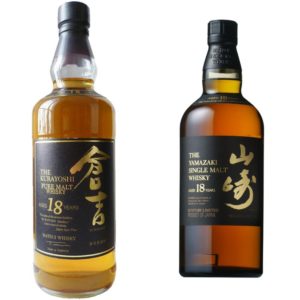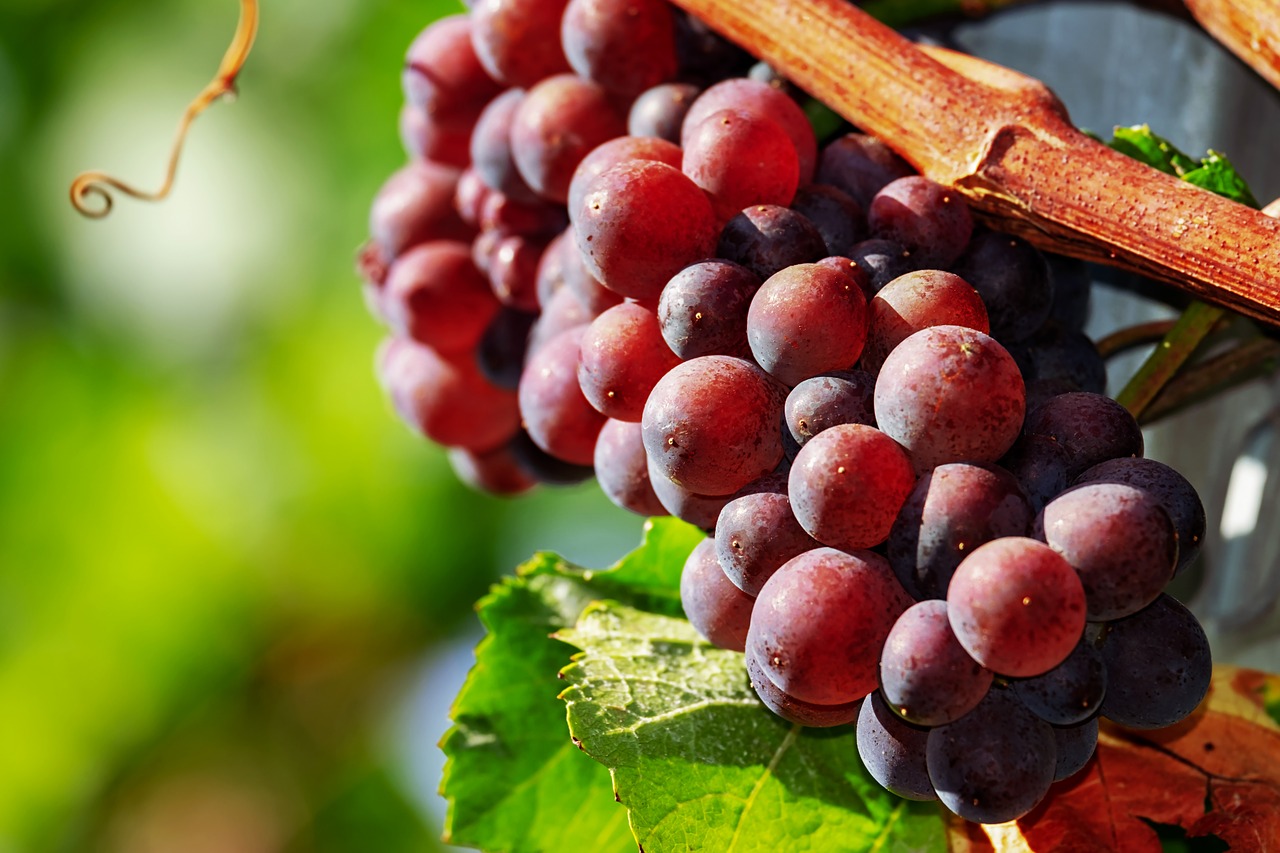On October 30, 2018, the Japan’s so-called “Wine Law” goes into effect. This law was introduced to combat the practice of Japanese wineries importing wine from overseas, bottling it in Japan, and labeling it as “domestic wine.” Ring any bells? It should for any regular reader of this site, because it’s something we’ve highlighted time and time again: fake Japanese whisky.
What is Fake Japanese Whisky?
Before we define fake Japanese whisky, it may be better to look at the legal definition of just whisky, per Japanese law. As of this writing. Japan’s National Tax Agency defines whisky as:
- Distilled, fermented alcohol using using malted grain and water as saccharized ingredients
- Distilled to less than 95% abv
- Must contain only alcohol, spirits, spices, coloring, and water
- Be a mixture of at least 10% the original distillate
That’s really it. It doesn’t have to be barley, it doesn’t have to be aged for X number of years, and it sure as hell doesn’t have to be made in Japan. You could import a weak-ass quinoa malt liquor from South America and call it whisky in Japan, if you like.
The even sadder reality is that you could also call it “Japanese whisky.” That’s because there is still no legal definition of Japanese whisky. A fake Japanese whisky, by my definition, is whisky which isn’t actually distilled in Japan, but sits on the same shelf right next to whisky that is. I’ll get into the question of how fake below.
Japanese Whisky: Fake Harder
Within fake Japanese whiskies, there seems to be a spectrum of deception — “transparency” sounds more positive. Companies that do import Scotch or Canadian whisky then sell it in Japan as whisky have varying levels of transparency. Do they even call it Japanese whisky? Do they literally tell you that it uses imported whisky, like in the case of Ichiro’s Malt World Blended Whisky? Do they use they avoid using the word “Distilled” on the label, like in the case of Mars Whisky? Do they play coy, not giving any specifics? There are rumors that even Japanese whisky mama bear Nikka Whisky uses imported Ben Nevis in some of their cheaper blends, like Nikka Black (Nikka’s response: “no comment”). Even within this space, some of the notorious fakers have been trying to legitimatize. Chugoku Jozo’s fake Japanese whisky “Togouchi” will likely fade into obscurity once their Sakurao Distillery starts churning out real Japanese whisky. Even Japanese Whisky Public Enemy No. 1 Matsui Shuzo is slated to open their Kurayoshi Distillery–which only started distilling whisky in 2017, by their own admission–to the public for tours in the near future.
This can make fake Japanese whiskies difficult to spot. If you’re looking for info about a particular distillery or whisky, this awesome infographic is a good place to start.

On the other hand. This says nothing about the taste of the whisky. Buying casks, blending them together, and slapping a label on the bottle — this is what every independent whisky bottler does worldwide. Would you call Gordon & MacPhail a phony because they’re not making their own whisky? Probably not. But would you call them a phony if they slapped a “Made by Gordon & MacPhail” label on the bottle? What if it’s made at Benromach? I’ll leave those questions to you.
 What happened with Japanese wine?
What happened with Japanese wine?
Japan’s domestic production of wine has been on the rise in recent years. Specifically regions like Yamanashi’s Koshu have been highlighted with recent IWSC awards presented to Katsunuma Jyozo, Suntory’s Tomi no Oka Winery, and Kirin’s Château Mercian. Unlike Japanese whisky, which almost exclusively uses imported malt, Japanese wine strives to use grapes actually grown in Japan. I say “strives to” there because the demand for authentic Japanese wine (i.e. made entirely from grapes grown in Japan) appears to be outstripping the supply, partially due to Japan’s rapidly greying population of farmers.
At the same time, wine labeling regulations up until now have been pretty loose in Japan. This increasing demand led some less scrupulous wineries to import wine from abroad, add a couple drops of Japanese wine, then label it as “domestic wine.”
National Tax Agency rescues Japan Wine
 On October 30, 2015, Japan’s National Tax Agency announced revisions to the Alcohol Tax Preservation & Alcohol Industry Union Law that would specifically apply to wine. I won’t go into the details of the law (there’s a handy flowchart on the last page of this PDF for those that do), but basically it defines three types of wine in Japan:
On October 30, 2015, Japan’s National Tax Agency announced revisions to the Alcohol Tax Preservation & Alcohol Industry Union Law that would specifically apply to wine. I won’t go into the details of the law (there’s a handy flowchart on the last page of this PDF for those that do), but basically it defines three types of wine in Japan:
- Imported wine, which uses no wine made in Japan — this includes bulk imported wine that is bottled in Japan
- Domestic wine, which must list the country of origin of its grapes, and be labeled as “uses imported wine” if using imported wine (i.e. some mixture of foreign and domestic ingredients/wine)
- Japan Wine, which does not use water as its primary ingredient, and is made only from grapes grown in Japan
These go into effect beginning October 30, 2018. What’s important is the addition of that “Japan Wine” category, which previously had not been codified. It’s estimated that while 70% of wine sold in Japan’s domestic market will fall be categorized as imported wine, 31% will be domestic wine, and only 3.7% able to be labeled Japan Wine. So you can expect it to command a premium.
Penalties for breaking these laws include fines and stripping the offending company of their winemaking license.
Takeaways for Japanese whisky
The main takeaway for Japanese whisky from the new Wine Law is the introduction of the protected category for Japan Wine. If the public, industry, and tax officials/lawmakers can agree on a strict definition of “Japan Whisky,” for example, the brand can continue its explosive growth domestically and internationally. If not: fake Japanese whiskies risk damaging its reputation.
What would constitute a Japan Whisky? It’s obviously a different beast from wine. For starters, nearly all Japanese whisky–the real stuff–uses imported malt. So we can’t just look at the ingredients alone to determine whether or not something is a “Japanese whisky.” That said, we certainly can’t ignore them either. Many products labeled as Japanese whisky have been popping up outside of Japan which use rice as the grain — here in Japan these would be categorized as liqueur. They are taking advantage of the loose definition of whisky in other countries, so I can’t really see them falling under Japan Whisky. Shochu, after all, uses koji in fermentation.
Judging by standards within the Japanese whisky-drinking public, though, it’s clear that the country of distillation is also an important factor. Aging and cask type or size, not so much.
Outside of Japan, there are plenty of companies sourcing whisky from other distilleries and calling it their own. Teeling Distillery launched with 16,000 casks of aged whiskey from daddy’s Cooley Distillery. At last update in 2017, there are 90 instances of “MGP” occurring on this list of American craft whiskies. But at least in these cases, the whisky originated in the same country.
APPENDIX for the maniacs: Regulations and Japanese whisky
Industry Guidelines
Japan’s Federation of Fair Trade Guidelines actually does prohibit labeling imported whisky as domestic whisky, and vice versa. However, these are only guidelines. Not enforceable laws.
This situation isn’t limited to whisky in Japan! Japan has recently experienced a string of incidents involving mislabeled food products. Laws across the board tend to be more lax compared to other countries. For example: you’re legally allowed to call imported clams “Hiroshima clams” if you drop them on a beach in Hiroshima.
Consumer Affairs Agency to the rescue
In response, Japan’s Consumer Affairs Agency (CAA) has implemented new Country of Origin labeling requirements that are being phased in from September 1, 2017, with a final deadline of April 1, 2022. These regulations also cover alcohol, and they will require companies making whisky in Japan to list country of origin information for the primary ingredient (besides water) on the labels . For Japanese whiskies being distilled in Japan, this means Suntory, Nikka, and others will need to list the country of origin for their barley or other grain.
For fake Japanese whiskies, it’s much more complex.
–Here’s where things start to get grey for me, I’m not a legal expert by any means. If you have a different interpretation of the new regulations, please comment–
First off: the new country of origin labeling requirements don’t apply to imported final products. For example imported bottles of Ardbeg. Imported products are already required to list the country of origin — but not the origin of the ingredients themselves.
But here we’re talking about fake Japanese whiskies being “made” in Japan. The final product itself isn’t imported. Instead, the creation of a fake Japanese whisky involves the importation of bulk whisky from abroad, which is in turn processed in Japan. This means the new labeling regulations will indeed apply.
With parts made in Japan
“Processed in Japan” — does this mean that fake Japanese whisky makers can simply use “Japan” as their country of origin on the label? Not so fast: we need to get into the CAA’s definition of processed here. Is the whisky processed in Japan if it’s just re-labeled? How about if it’s taken out of a cask, then bottled here? How about if it’s transferred to a cask in Japan, aged in Japan, then bottled? This is generally how fake Japanese whisky is made.
Anticipating such questions, the CAA provided some examples of activities which would not constitute a significant amount of processing, meaning those makers would not be allowed to list Japan as the country of origin. There’s obvious ones like divvying up, re-labeling, cutting, crushing, freezing. Then others like adding salt, adding a small amount of flavoring, blending, and re-heating. But let’s ask the real question: how about maturation? Would maturation in Japan meet the threshold to call an imported whisky “made in Japan” on the label?
Unfortunately the CAA doesn’t provide answer to that. IANAL, but from where I sit, putting a Scotch in a cask in Japan for its final year of life doesn’t constitute “significant” processing. Thus, I would expect fake Japanese whisky makers must list the country of origin of the imported whisky they’re using. Or… would they be expected to list the country of origin of the ingredients in that imported whisky? Per the examples provided by the CAA, it’s the former.
Legal Loopholes
But! When it comes to whisky, there’s a major loophole in the new country of origin labeling requirements. In fact, it’s the only place in the CAA’s FAQ where “whisky” is mentioned by name.
Basically, when pre-regulation intermediary products are used to create post-regulation final products, the maker is free to choose which regulations to follow when labeling. Additionally, if there’s a blend of pre-regulation and post-regulation intermediary products, the maker can choose which regulation to follow.
For a bad actor, that means even a single drop of pre-regulation imported whisky (i.e. from before September 1, 2017) will exempt them from the new country of origin labeling requirements. So it could be decades before these new regulations will really start to impact fake Japanese whisky.
Hi there! I created and run nomunication.jp. I’ve lived in Tokyo since 2008, and I am a certified Shochu Kikisake-shi/Shochu Sommelier (焼酎唎酒師), Cocktail Professor (カクテル検定1級), and I hold Whisky Kentei Levels 3 and JW (ウイスキー検定3級・JW級). I also sit on the Executive Committees for the Tokyo Whisky & Spirits Competition and Japanese Whisky Day. Click here for more details about me and this site. Kampai!



4 Comments